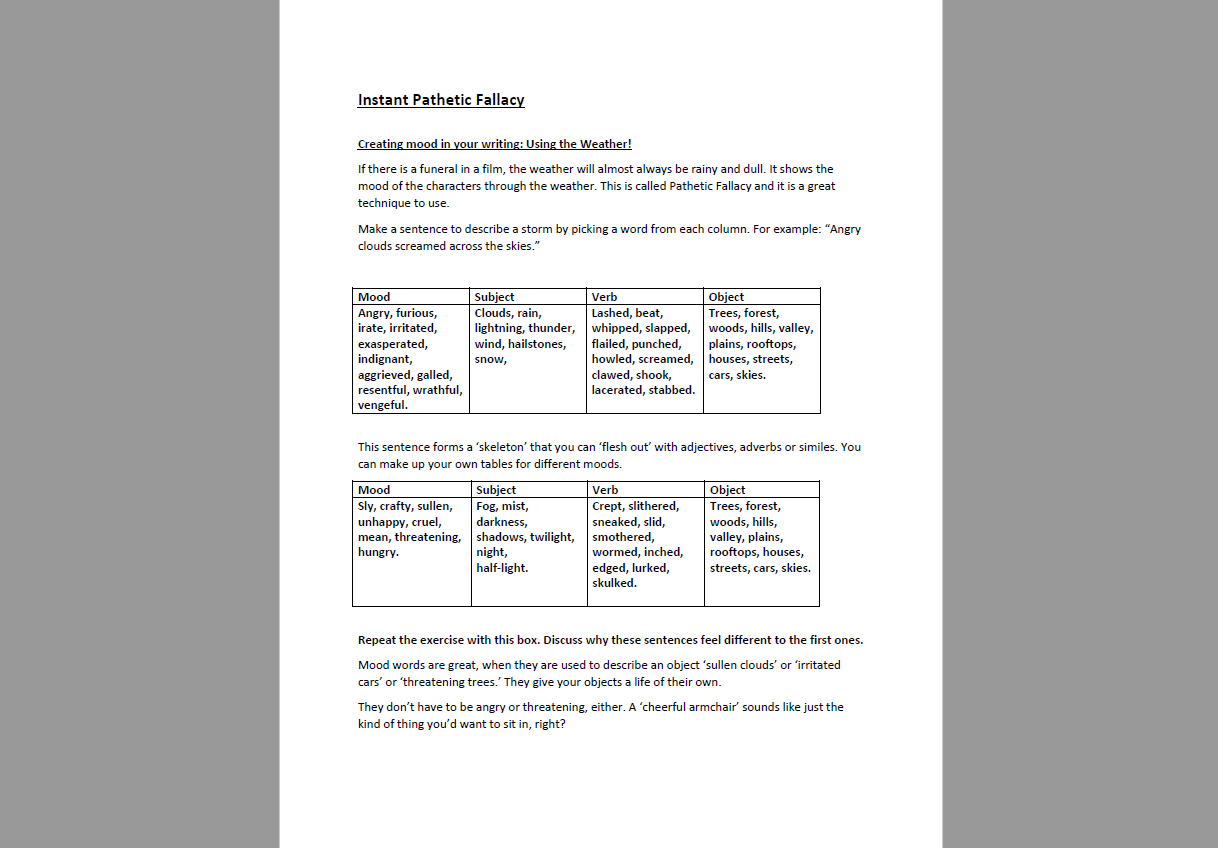If there is a funeral in a film, the weather will almost always be rainy and dull. It shows the
mood of the characters through the weather. This pathetic fallacy examples worksheet for GCSE English shows students how to use the technique.
What is pathetic fallacy?
Pathetic fallacy is attributing human feelings and responses to inanimate things or animals.
Worksheet activities
Firstly, pupils need to make a sentence to describe a storm by picking one word from four separate columns – mood; subject; verb; object.
For example: “Angry clouds screamed across the skies.”
This sentence forms a skeleton that students can flesh out with adjectives, adverbs or similies. Students can make up their own tables for different moods.
Pathetic fallacy examples GCSE
Mood words are great for describing an object – ‘sullen clouds’, ‘irritated cars’, ‘threatening trees.’ They give your objects a life of their own.
Pathetic fallacy doesn’t have to be angry or threatening, either. A ‘cheerful armchair’ sounds like just the
kind of thing you’d want to sit in, right?














